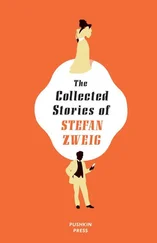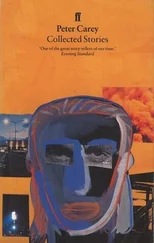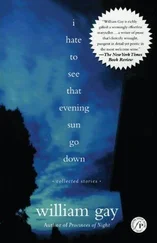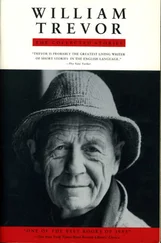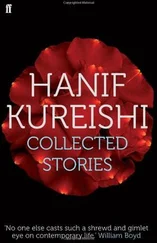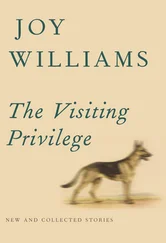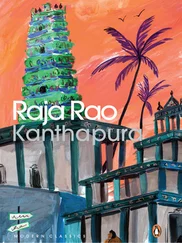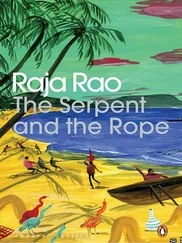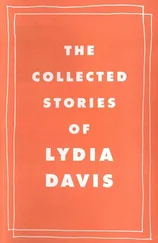Raja Rao - Collected Stories
Здесь есть возможность читать онлайн «Raja Rao - Collected Stories» весь текст электронной книги совершенно бесплатно (целиком полную версию без сокращений). В некоторых случаях можно слушать аудио, скачать через торрент в формате fb2 и присутствует краткое содержание. Год выпуска: 2014, Издательство: Penguin, Жанр: Классическая проза, на английском языке. Описание произведения, (предисловие) а так же отзывы посетителей доступны на портале библиотеки ЛибКат.
- Название:Collected Stories
- Автор:
- Издательство:Penguin
- Жанр:
- Год:2014
- ISBN:нет данных
- Рейтинг книги:5 / 5. Голосов: 1
-
Избранное:Добавить в избранное
- Отзывы:
-
Ваша оценка:
- 100
- 1
- 2
- 3
- 4
- 5
Collected Stories: краткое содержание, описание и аннотация
Предлагаем к чтению аннотацию, описание, краткое содержание или предисловие (зависит от того, что написал сам автор книги «Collected Stories»). Если вы не нашли необходимую информацию о книге — напишите в комментариях, мы постараемся отыскать её.
Collected Stories — читать онлайн бесплатно полную книгу (весь текст) целиком
Ниже представлен текст книги, разбитый по страницам. Система сохранения места последней прочитанной страницы, позволяет с удобством читать онлайн бесплатно книгу «Collected Stories», без необходимости каждый раз заново искать на чём Вы остановились. Поставьте закладку, и сможете в любой момент перейти на страницу, на которой закончили чтение.
Интервал:
Закладка:
The identification of the narrator with the swan in the story of Nala and Damayanti is significant. It is the swan that introduces Nala to Damayanti by praising the king’s virtues; Damayanti falls in love with Nala and vows to marry only him.
Nimka knew the Indian saying that the swan knows how to separate milk from water — the good from the bad, and as I knew her to be good, she recognized me a swan. The swan sailed in and out and India became the land where all that is wrong everywhere goes right there. (1978: 100)
The swan or bar-headed goose ( hamsa, Anser indicus ) is, in Indian iconography, a symbol of enlightenment, of those able to discern between the Self and the non-Self. The title paramahamsa (‘supreme soul’: an ascetic of utmost sanctity) is often bestowed upon those who have become fully enlightened, such as Ramakrishna Paramahamsa (1836–86). Hamsa is also one of the names of Vishnu. Sankara writes: ‘The Lord is called Hamsa as He dispels ( hanti ) the fear of transmigration for those who meditate upon the oneness of “I am He” ( ahaṃ saḥ ).’ 21The statement ‘I am He’ sums up the essential teaching of the Upanishads: the atman and Brahman are one and the same. Again, the bird features prominently in classical Sanskrit poetry. In Kalidasa’s Meghadūta (‘The Cloud Messenger’), the Yaksha, an exile in the Vindhya Mountains, tells the cloud that on its journey to Lake Manasa, carrying his message to his wife in their home in Alaka in the Himalaya, it will be accompanied by a flock of wild geese.
Eager to fly to Lake Manasa, a flock of wild geese,
with shoots of lotus stalks to sustain them
on the journey, will be your companions
in the sky as far as Mount Kailasa. 22
Rich in symbolism, the swan (wild goose) weaves the stories of Nala and Damayanti, and the Yaksha and his wife into the very fabric of ‘Nimka’, deepening its resonance, and making the reader aware of its metaphysical significance. Time and space do not seem to matter as we uncover the many layers of this unforgettable story.
The reunions of Nala and Damayanti, and of the Yaksha and his wife, make Nimka’s situation all the more poignant. Is India then the ‘land where all that is wrong everywhere goes right there’?
Though the narrator is involved in the story, he also stands outside it. Perhaps he realizes that Nimka is after all an illusion (maya). As Michel reminds us: ‘The object exists because of its name. Remove the name, and the object is space. Remove the space, and the object is the Reality’ (1978: 101–02). Is Nimka real or unreal? She is a shadowy figure, a fantasy of the narrator’s imagination, someone ethereal who flits in and out of the story. In ‘Nimka’, Rao transcends the limits of the short story to explore states of consciousness that are not usually accessible to language by drawing upon, on the one hand, myths and folklore, and on the other, metaphysics, to try to express the inexpressible. By all accounts, ‘Nimka’ is a triumph.
The author’s note to the reader asks that the eleven stories in On the Ganga Ghat ‘be read as one single novel’. The scene is Kashi, the City of Light, with the ever-flowing Ganga in the background. This is the stage on which the stories are enacted. It seems that the entire world has gathered in Kashi as if for a festival. The Indian imagination is mythopoeic, and so gods and humans mingle with one another as story after story from Kashi’s sthala-purana is woven seamlessly into the narrative. Like the ever-flowing Ganga, there is no end to the stories. It is for this reason that Rao would like us to consider the book as a ‘single novel’.
Let us look at one of the stories, ‘X’ (the stories do not have titles) — that of Sudha, the only daughter of the jeweller Ranchoddoss Sunderdoss, whose family business was founded way back in 1799 on Girgaum Road in Bombay.
They say on the day she was born, suddenly, a peacock, wings outstretched and keening, strutted past the courtyard (the mother had gone to Kathiawar, to her own mother, for the childbirth) and everybody said: ‘Well, this girl, she will bring in holy riches.’ 23
At fourteen, Sudha resolves not to marry. She would sit for hours in the family sanctuary, chanting ‘Rama, Sri Rama’. She would even fast and observe days of silence. One night she has a vision: ‘a sadhu would come to initiate her, and she would then become a true devotee of the Lord’ (1993: 113). In three days, a handsome south Indian sadhu arrives at the Ranchoddoss’s and asks Sudha’s mother, Ramabehn: ‘Is there anyone living in this house who’s deeply devoted to the Lord?’ (1993: 114). On hearing this, Sudha comes out and falls at the sadhu’s feet. At that moment, she remembers her past life ‘somewhere in Kathiawar’. After three months, the sadhu initiates her into sannyas (‘life as a wandering ascetic’). Sudha puts on a white sari, and a few days later leaves with the sadhu for the Himalaya. Ramabehn is devastated and dies, and Ranchoddoss leaves home in search of his daughter. He finds her in Benares, reading the Vāsiṣṭha Rāmāyaṇa to widows and ascetics. ‘“Father,” she said, looking at the flowing Ganga before her, “Father, I think I have just a chink to the door of Knowledge — to Jnan”’ (1993: 120). Happy to be reunited with his daughter, Ranchoddoss begins his spiritual exercises in earnest under her guidance. Later, father and daughter visit Badrinath to see her guru’s guru (her own guru, the sadhu, had died). The Guru initiates Ranchoddoss into sannyas. ‘Life flows as you see, like the Ganga herself. . reminding you that the Truth is but one indivisible flow. What is dream and which reality, then?’ (1993: 120). Ranchoddoss, the jeweller from Bombay, understands. He has at last come home.
Sankara praises the river in his ‘Hymn to Ganga’ (‘Gangāstotraṃ’):
Rather a fish or a turtle in Thy waters,
A tiny lizard on Thy bank, would I be,
Or even a shunned and hated outcaste
Living but a mile from Thy sacred stream,
Than the proudest emperor afar from Thee. 24
The true protagonist of these stories are not the men and women who throng the ghats of Kashi, but the Ganga herself. Like a thread of gold, the river braids the stories into a seamless whole. On the Ganga Ghat is steeped in the spiritual life of Kashi and is an eloquent reminder of the centrality of the city and the river in the Indian consciousness.
What is remarkable about these three stories is Rao’s understanding of women. Javni, Nimka and Sudha come across as real people whom we may have known. They are not characters in fiction. Sudha’s story is especially poignant. Born into a wealthy family, she gives up a life of ease and privilege. A spiritual aspirant, she leaves home and goes forth into homelessness in search of, as her name implies, the nectar of Knowledge.
It was Rao, who, more than any other writer of his generation— which included Mulk Raj Anand (1905–2004) and R.K. Narayan (1906–2001) — established the status of Indian literature in English during India’s struggle for independence from British rule. Neither Anand nor Narayan had come anywhere close to Rao’s innovative approach to fiction. Rao’s fiction is a philosophical quest in search of the word as mantra that would lead to liberation. Rao never considered himself to be solely an Indian writer. He had spent his formative years in France and not in England. Though his novels are rooted in the Indian philosophical tradition, they are universal in scope. Rao was conscious of the fact that English is an Indo-European language and therefore distantly related to Sanskrit. In his fiction, English, French and Sanskrit rub shoulders with one another in a linguistic family reunion of sorts. What is explored is the nature of language itself in an attempt to know the Truth.
Читать дальшеИнтервал:
Закладка:
Похожие книги на «Collected Stories»
Представляем Вашему вниманию похожие книги на «Collected Stories» списком для выбора. Мы отобрали схожую по названию и смыслу литературу в надежде предоставить читателям больше вариантов отыскать новые, интересные, ещё непрочитанные произведения.
Обсуждение, отзывы о книге «Collected Stories» и просто собственные мнения читателей. Оставьте ваши комментарии, напишите, что Вы думаете о произведении, его смысле или главных героях. Укажите что конкретно понравилось, а что нет, и почему Вы так считаете.

